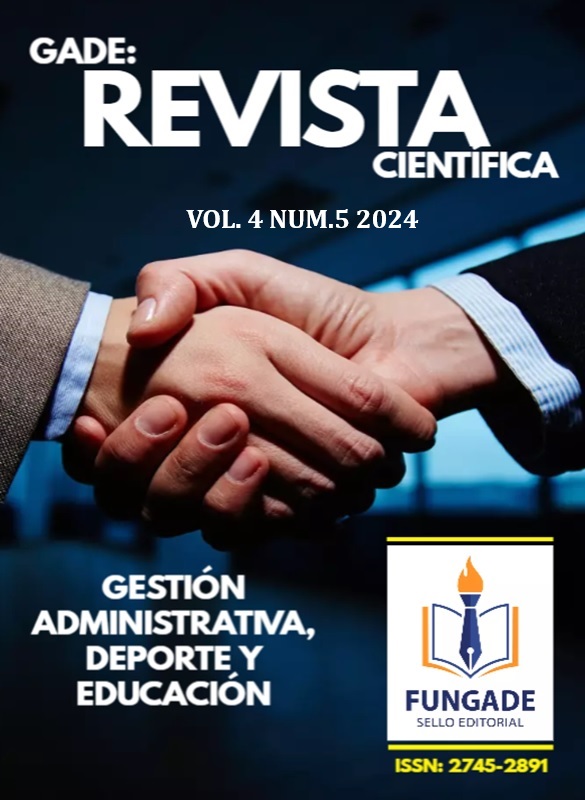Relationship between physical activity, anxiety, and adherence: a correlational analysis
Abstract
This study focused on exploring the relationship between physical activity, anxiety, and exercise adherence in university students using a correlational approach. Standardized instruments such as the International Physical Activity Questionnaire (IPAQ-Short), the Beck Anxiety Scale (BAI), and a validated exercise adherence questionnaire were used. The sample consisted of 224 students from the University of Pamplona, selected using inclusion criteria that guaranteed the homogeneity of the group in terms of anxiety levels and physical activity. Statistical analysis was carried out using Spearman's correlation coefficient, given the non-parametric nature of the variables studied. The results revealed a moderate and significant correlation between the level of physical activity and exercise adherence (rho = 0.403, p < 0.001), indicating that students with greater participation in physical activities were more likely to maintain consistent exercise practice. Likewise, a weak negative correlation was found between sitting time and physical activity level (rho = -0.136, p = 0.043), suggesting that longer sedentary time is associated with lower levels of physical activity. However, no significant correlations were observed between anxiety and physical activity levels (rho = -0.072, p = 0.214) or between METS and anxiety (rho = -0.089, p = 0.185), indicating that physical activity alone may not be sufficient to reduce anxiety levels in this population.
Downloads
References
Campbell, D. T. (1996). Evolutionary epistemology. Lehigh University, 6. Obtenido de https://www.nasonline.org/member-directory/deceased-members/57140.html
Cesana, E. (2023). La preparación física del futbolista, para jugar al fútbol. Grupoequipo, 1. Obtenido de https://grupoekipo.com/aulavirtual/courses/la-preparacion-fisica-del-futbolista-para-jugar-al-futbol-2/
Creswell, J. W. (1994). Qualitative inquiry and research design. Academia, 16. Obtenido de https://academia.utp.edu.co/seminario-investigacion-II/files/2017/08/investigacion-cualitativacreswell.pdf
Derek T. Y. Mann, A. M. (2020). Perceptual-Cognitive Expertise in Sport: A Meta-Analysis. Journal of Sport and Exercise Psychology, 1. Obtenido de https://www.researchgate.net/publication/5878313_Perceptual-Cognitive_Expertise_in_Sport_A_Meta-Analysis
Eduardo, R. (2007). Propuesta de un cuestionario breve pra la evaluacion de la competitividad en el ambito deportivo: Competitividad-10. Revista Psicologia del deporte, 1.
García, P. A. (2006). Importancia de la preparación psicológica en el rendimiento futbolístico. Efdeportes, 1. Obtenido de https://www.efdeportes.com/efd130/importancia-de-la-preparacion-psicologica-en-el-rendimiento-futbolistico.htm
Herrman. (2018). Estilos de pensamiento, enfoques epistemológicos y la generación del conocimiento científico. Espacios, 1. Obtenido de https://www.revistaespacios.com/a18v39n51/a18v39n51p18.pdf
Moreno, J. A., & Martínez, A. (2006). Importancia de la teoría de la autodeterminación en la práctica físicodeportiva: fundamentos e implicaciones prácticas. Redalyc, 1. Obtenido de https://www.redalyc.org/pdf/2270/227017635004.pdf
Rebecca Tanner, C. G. (2016). Physiological Tests for Elite Athletes 2nd Edition. Human Kinetics, 1. Obtenido de https://us.humankinetics.com/products/physiological-tests-for-elite-athletes-2nd-edition-pdf#tab-description
Remor, E. (2007). Propuesta de un cuestionario breve para la evaluacion de la competitividad en el ambito deportivo: competivididad-10. Revista de psicologia del deporte, universidad de las ylles belears, universidad autonoma de barcelona, 1.
Sampieri, r. H. (2010). Metodología de la investigacion. Freelibros. Obtenido de https://www.icmujeres.gob.mx/wp-content/uploads/2020/05/sampieri.met.inv.pdf
Santiago, x. Y. (2022). Geopolitica del futbol: sobre la globalizacion del balon. Redalyc.org uaem. Academo, 1.
Valdivia-mora, p. (2016). Motivation and care-concentration in footballers. Review of studies. Universidad de murcia, 1. Obtenido de https://digitum.um.es/digitum/bitstream/10201/50703/1/264701-915581-1-sm.pdf
Copyright (c) 2024 Javier Andrésa Rojas Peñaloza,Andrés Aubin Portilla Flórez,Diego Fernando Polanco Bustos,Frank Marty Malkun Royero,Emmanuel Vanegas Acosta, Christopher Emmanuel Jaimes Beltrán

This work is licensed under a Creative Commons Attribution-NonCommercial-NoDerivatives 4.0 International License.






